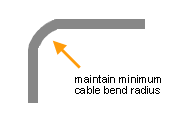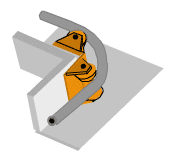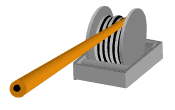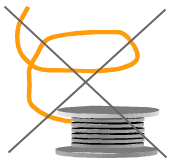| |
1.3.1 Electrical PROFIBUS cables (part four)
Maintaining bending radius
- Always maintain the minimum permissible cable bend radius. Dropping below the minimum bending radius leads to damage of the PROFIBUS cable and changing of its electrical properties. The minimum bend radius can be found on the manufacturer’s data sheets.

- For a simple bend, the radius should typically not be less than 10 times the cable diameter. If repeated bending is expected during service, for example due to attaching and detaching PROFIBUS stations, a larger bend radius is required (typically approximately 20 times the cable diameter).
- During laying, the PROFIBUS cable is mechanically subjected to additional tensile forces. For this reason, a larger bend radius must be maintained during pull-in than when in its final position. Pulling PROFIBUS cable around a corner is a particular problem. For this reason, you must use pulleys to avoid any excessive stress and sharp bends when pulling PROFIBUS cables around corners.

- The specified bend radius for flat PROFIBUS cables applies only to bending on the flat side. Bending such cables sideways requires a significantly larger bend radius.
Avoid looping
- Pull the PROFIBUS cable straight off the drum, which should be free to rotate. Never unwind cable from a stationary drum.

- Use auxiliary equipment, such as drum feeders or rotary plates for this purpose. This prevents the formation of loops and associated cable kinking. In addition, it prevents the PROFIBUS cable from being twisted.

- If a loop should have occurred, wind the loop out of the PROFIBUS cable. Do not simply pull the PROFIBUS cable straight since this would stretch and twist the PROFIBUS cable. Since the copper core and the insulation behave differently under tension, the plastic may contract leading to non-insulated cores and creating a short circuit.
|
